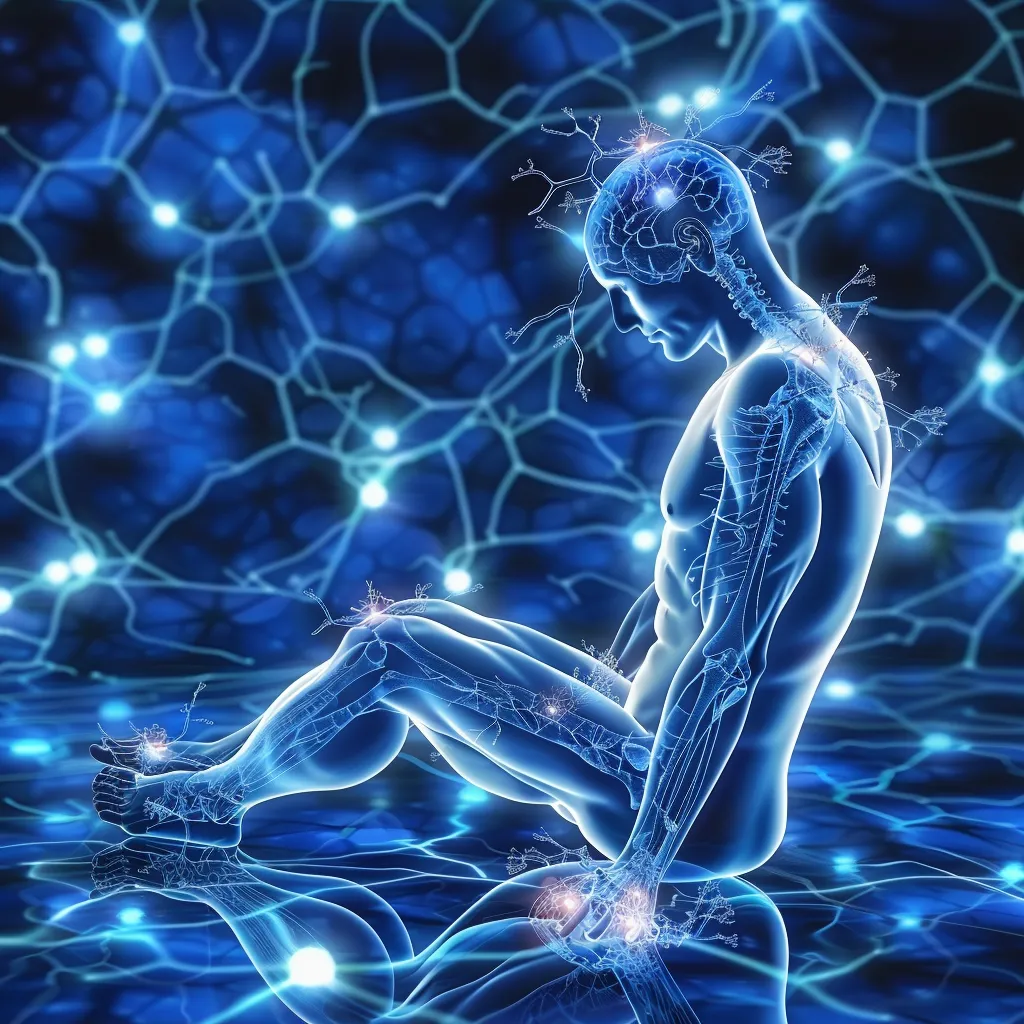In the intricate tapestry of human biology, a symphony of systems and processes works tirelessly to maintain balance and health. Among these, the endocannabinoid system (ECS) stands out as a relatively recent discovery that has fundamentally transformed our understanding of health and disease. This complex network, intertwined with the fabric of nearly every physiological process, serves as a testament to nature’s wisdom, orchestrating harmony within our bodies. As we delve into the ECS and its pivotal role in human health, the profound implications of medical cannabis in modulating this system come to light, offering groundbreaking perspectives on treatment and wellness.


Table of Contents
ToggleUnveiling the Endocannabinoid System
The discovery of the ECS in the late 20th century marked a paradigm shift in medical science. This system, comprising endocannabinoids, receptors, and enzymes, is a universal architect of balance, regulating everything from pain and inflammation to appetite, mood, and memory. Its omnipresence in the body underscores its significance in maintaining homeostasis, the biological equilibrium vital for health and survival.
The Cast of the ECS: Endocannabinoids, Receptors, and Enzymes
At the heart of the ECS are the endocannabinoids, molecules produced by our bodies that mirror the cannabinoids found in the cannabis plant. These endogenous cannabinoids, including anandamide (AEA) and 2-arachidonoylglycerol (2-AG), act as messengers, binding to cannabinoid receptors scattered throughout the body.
The two primary receptors, CB1 and CB2, serve distinct roles: CB1 receptors, prevalent in the brain and central nervous system, influence mood, appetite, and cognitive functions. CB2 receptors, found in peripheral organs and cells associated with the immune system, are implicated in managing pain and inflammation.
Enzymes complete the ECS trinity, breaking down endocannabinoids once they’ve fulfilled their purpose, ensuring the system’s precision and balance.
The ECS: A Conductor of Harmony
The ECS‘s role in maintaining homeostasis is akin to a conductor ensuring the orchestra’s harmony, subtly influencing various bodily functions. By modulating neurotransmitter release, the ECS fine-tunes our physiological responses, ensuring that systems like pain perception, immune response, and stress management operate seamlessly.


Medical Cannabis and the ECS: A Partnership for Healing
The intersection of medical cannabis and the ECS is a frontier of immense therapeutic potential. Phytocannabinoids from the cannabis plant, such as THC and CBD, interact with the ECS in ways that can supplement the body’s own endocannabinoids, enhancing its ability to achieve balance.
THC: The Key that Fits the Lock
THC‘s psychoactive effects stem from its ability to bind to CB1 receptors, mimicking the action of endocannabinoids. This interaction can alleviate pain, stimulate appetite, and reduce nausea, offering relief in conditions like chronic pain, cancer, and multiple sclerosis.
CBD: The Modulator
CBD, on the other hand, has a more indirect influence on the ECS. It does not bind strongly to CB1 or CB2 receptors but enhances endocannabinoid tone by inhibiting the breakdown of anandamide. This action, coupled with its interaction with non-cannabinoid receptors, contributes to CBD‘s anti-inflammatory, anxiolytic, and neuroprotective properties.


The ECS and Disease: Restoring Balance Through Cannabis
The concept of “clinical endocannabinoid deficiency” posits that low endocannabinoid levels in the body may contribute to the pathophysiology of various conditions. Medical cannabis, with its ability to modulate the ECS, presents a novel approach to restoring this balance, offering hope for conditions previously deemed intractable.
Future Perspectives: Expanding the ECS Therapeutic Horizon
The exploration of the ECS and its modulation by medical cannabis is still in its infancy, with vast potential for future research. Understanding the nuances of this system could unlock new therapeutic avenues, paving the way for cannabinoid-based treatments tailored to individual ECS profiles.
Embracing the ECS: Towards a New Era of Medicine
The endocannabinoid system, a master regulator of balance and health, represents one of nature’s most sophisticated tools for maintaining homeostasis. As we continue to unravel the mysteries of the ECS and its interplay with medical cannabis, we stand on the brink of a new era in medicine—an era where treatment is not just about managing symptoms but restoring the body’s innate equilibrium. In this journey of discovery, the promise of medical cannabis as a key to unlocking the full therapeutic potential of the ECS offers a beacon of hope for millions seeking relief and wellness.
FAQ: The Endocannabinoid System and Its Function
What is the endocannabinoid system (ECS)?
The endocannabinoid system (ECS) is a complex cell-signaling system identified in the early 1990s by researchers exploring THC, a well-known cannabinoid. It’s involved in regulating a range of functions and processes, including sleep, mood, appetite, memory, reproduction, and pain sensation, to maintain the body’s homeostasis.
How does the ECS work?
The ECS works through three core components: endocannabinoids, receptors, and enzymes. Endocannabinoids are molecules made by the body that help keep internal functions running smoothly. Receptors found throughout the body interact with these endocannabinoids and cannabinoids from cannabis. Finally, enzymes break down endocannabinoids after they’ve been used.
What are the main components of the ECS?
- Endocannabinoids: Compounds produced naturally by the body that interact with cannabinoid receptors.
- Cannabinoid receptors: Found on the surface of cells, they transmit signals that kickstart the necessary cellular response to maintain homeostasis.
- Enzymes: Responsible for breaking down endocannabinoids once they’ve fulfilled their purpose.
What role does THC play in the ECS?
THC (tetrahydrocannabinol) is a cannabinoid found in cannabis that can activate both CB1 and CB2 receptors in the ECS, mimicking the action of endocannabinoids. This interaction can produce various effects, including reducing pain and nausea, stimulating appetite, and inducing psychoactive effects.
How does CBD interact with the ECS?
CBD (cannabidiol) interacts with the ECS differently than THC. It does not bind directly to CB1 or CB2 receptors but influences the ECS indirectly. CBD can enhance endocannabinoid tone by inhibiting the breakdown of anandamide, a prominent endocannabinoid, and interacting with other non-cannabinoid receptors, contributing to its therapeutic effects.
Can the ECS contribute to diseases?
Some researchers believe in a theory called “clinical endocannabinoid deficiency,” suggesting that low levels of endocannabinoids can contribute to the development of certain conditions. While still under investigation, this theory supports the potential therapeutic role of cannabinoids in restoring normal endocannabinoid function and maintaining health.
How can medical cannabis affect the ECS?
Medical cannabis contains cannabinoids similar to endocannabinoids, which can interact with the ECS to help restore balance and alleviate symptoms of various conditions. THC and CBD, in particular, have been shown to modulate the ECS in ways that can provide therapeutic benefits, such as pain relief, mood regulation, and anti-inflammatory effects.
What are the therapeutic implications of understanding the ECS?
Understanding the ECS opens up new avenues for the development of cannabinoid-based medications that can target specific parts of the ECS for therapeutic purposes. This could lead to new treatments for conditions that are currently difficult to manage, offering hope for patients seeking alternatives to traditional medications.
Is the research on the ECS and its interaction with cannabis complete?
How can I learn more about the ECS and medical cannabis?
To learn more about the ECS and medical cannabis, consider consulting reputable sources such as scientific journals, medical institutions, and organizations dedicated to cannabis research and education. Speaking with healthcare professionals knowledgeable in cannabinoid medicine can also provide valuable insights tailored to individual health needs.
The exploration of the ECS and its modulation by cannabinoids like THC and CBD is a rapidly evolving field, promising to revolutionize our approach to health and disease. As we continue to uncover the complexities of this intricate system, the potential for innovative treatments and a deeper understanding of bodily harmony comes into clearer view.
Kannabu's Online Cannabis Educational Resources
Read Educational Online Guides and Articles to Learn About Cannabis
- Navigating the Green Path: CBD vs. THC in Medical Treatment
- The Aromatic Architects of Healing: The Role of Terpenes in Medical Cannabis
- Navigating the Green Frontier: Clinical Trials on Cannabis and Its Effects
- Charting the Green Path: Cannabis Dosing Guidelines for Medical Use
- The Endocannabinoid System: Nature’s Balancing Act in Human Health
- A Green Horizon: Cannabis as an Alternative to Opioids
- Navigating the Mind’s Garden: Cannabis and Mental Health Treatment
- Unlocking the Green Code: Exploring the Genetic Diversity and Pharmacological Promise of Cannabis
- Weaving Green into Gold: The Integration of Medical Cannabis into Traditional Medicine
- The Therapeutic Promise of Medical Cannabis: Exploring the Spectrum of Cannabinoids
- From Young to Old: The Compassionate Embrace of Medical Cannabis in Pediatric and Geriatric Care
- Green vs. Traditional: Navigating the Crossroads of Medical Cannabis and Conventional Therapies
- Beyond the Pain: The Comparative Effectiveness of Cannabis in Chronic Pain Management
- Unlocking Cannabis’s Secrets: The Journey Through Cannabinoid Pharmacokinetics and Pharmacodynamics
- Green Paws: Navigating the Frontier of Medical Cannabis in Veterinary Care
- Unlocking Relief: The Transformative Role of Medical Cannabis in Pain Management


This product has been a game-changer for me.